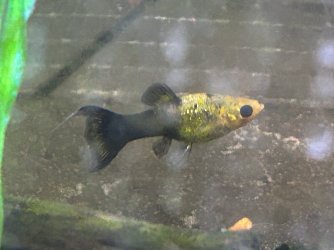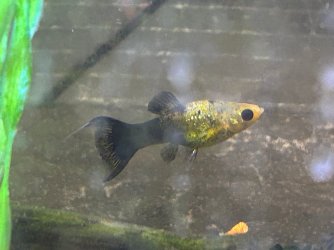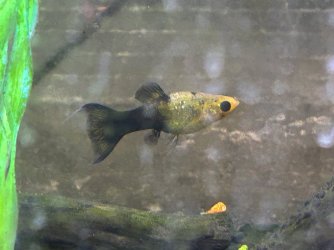So i noticed today that my molly has a long strand of white at the back of her tail. And before she never had this. Is this fin rot? Should i start adding in seachem paraguard? My water parameters are.
general hardness: 214 ppm
pH: 8.0
Ammonia: 0
nitrite:0
Nitrate zero cuz i just water changed recently.
Could the cause possibly be i was feeding bad foods? Sometimes the flake container would be open and i would give it to her which is my fault.
The tankmates are 1 other female platy and this molly in the photo is also a female. I have a sponge filter and a internal filter.
general hardness: 214 ppm
pH: 8.0
Ammonia: 0
nitrite:0
Nitrate zero cuz i just water changed recently.
Could the cause possibly be i was feeding bad foods? Sometimes the flake container would be open and i would give it to her which is my fault.
The tankmates are 1 other female platy and this molly in the photo is also a female. I have a sponge filter and a internal filter.




